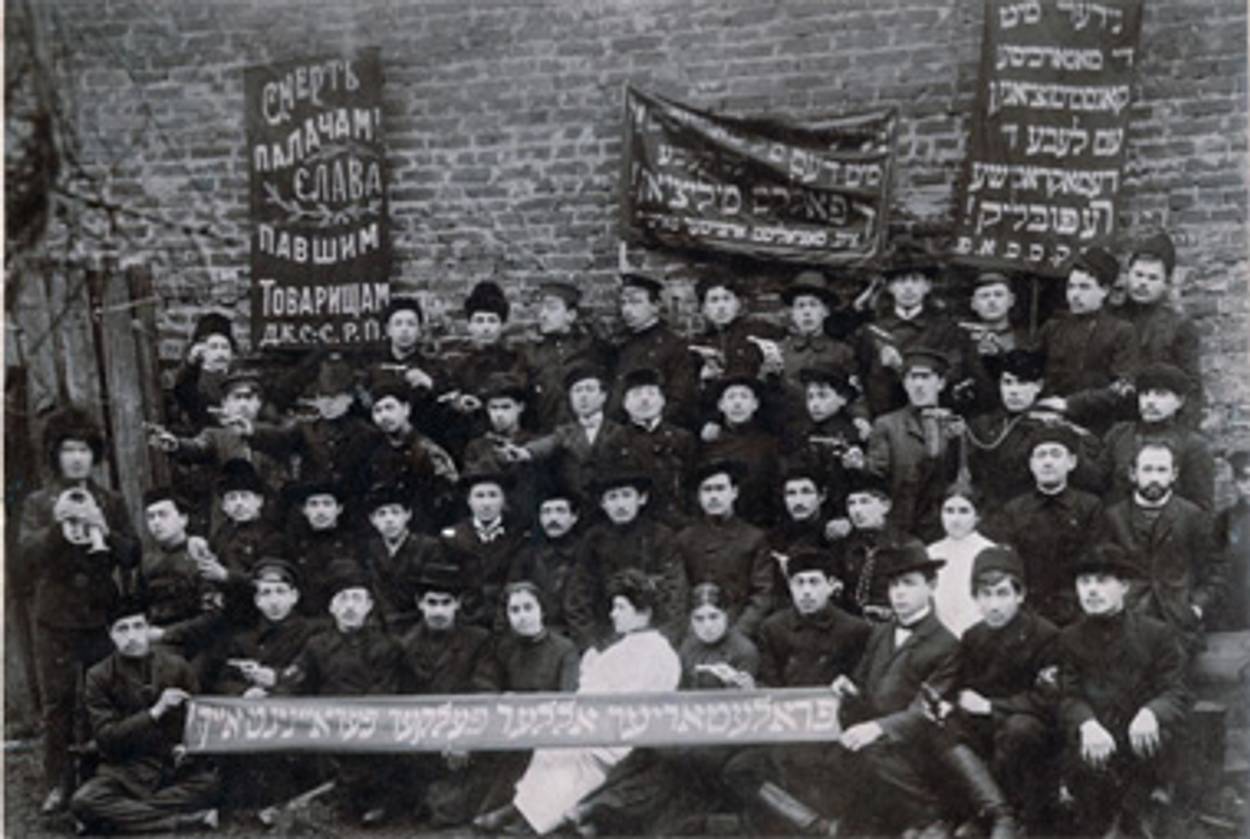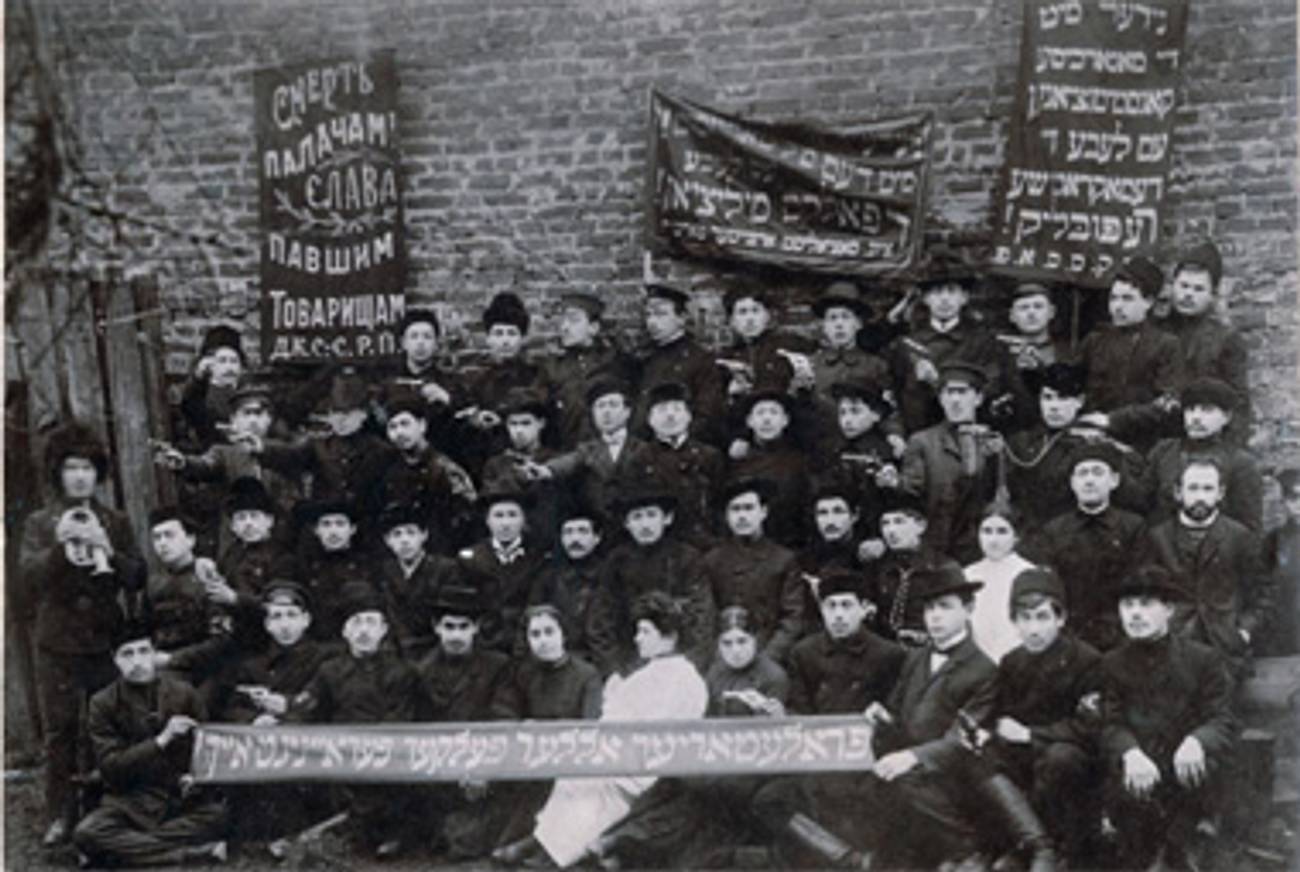Tumultuous Time
A panoramic history of Russian and Polish Jewry focuses on the key period between 1881 and 1914




Every so often, Americans wring their hands over the historical ignorance of their fellow citizens, as yet another poll shows that most of us don’t know the date of the American Revolution or the reasons why the Civil War was fought. Yet it’s possible that this historical ignorance is just the flip side of one of the best things about being an American: the right to let go of the past. What brings immigrants to this country from so many war-torn, poverty-wracked places if not the promise of oblivion—that their children, born in American ignorance and confidence, will no longer have to hate the people they hate, fear the people they fear? Without this kind of amnesty from the past, American life wouldn’t be possible at all: You couldn’t have descendants of the English and the Irish, or the Koreans and the Japanese, or other traditional foes, living together as Americans if they still cherished the old antagonisms. It’s not surprising that, in a country founded on letting go of the past, so many people live entirely in the present.
American Jews are, for the most part, quite happy to share in this present-mindedness. Yet, as so often happens, the Jewish case is not quite the same as that of other groups. Jewishness is not only an ethnicity, it is a religion, which means that practicing Jews automatically maintain a connection to the whole of Jewish history, as it is recorded in scripture, the liturgy, and the calendar. Perhaps even more important in dictating American Jewish attitudes toward Jewish history, however, is the way the Holocaust profoundly altered the course of that history.
The Irish and the Italians and the Chinese have an “old country,” which can be visited and nostalgized over. But for most American Jews, most of whose ancestors came to this country from Eastern Europe in the late 19th and early 20th centuries, the old country was destroyed in the Holocaust. For a Jewish tourist, going to Poland means a tour of concentration camp sites, not a visit to distant relatives. And the destruction of that Jewish civilization means, paradoxically, that its American descendants cannot let it go, the way other immigrant groups can let their history go, knowing that the mother country is pursuing its own story in parallel to the American story. Because there is no more old country, it is up to us to keep it alive in memory, or else it will totally cease to exist.
This predicament helps to explain why American Jewish historical consciousness proceeds on two tracks. On the one hand, Jewish history is constantly being written and investigated, with great ingenuity and passion: Not only is there a thriving field of academic Jewish studies, there is a robust lay readership that buys large numbers of books on Jewish history. On the other hand, most of us take our images of the lives our great-grandparents led from the lyrics of Fiddler on the Roof, the photographs of Roman Vishniac, and movies like Schindler’s List: the whole doomed romance of the shtetl, conceived as a sepia-tinged world of simple piety and lost authenticity. (Alana Newhouse, the editor of Tablet, wrote about how the Vishniac photos, in particular, help to construct a mythic past.) And that synthetic image, because it seems so totally different from the world we live in now, only increases our sense of alienation and guilt toward the East European Jewish past. This guilt—the guilt of the survivors, of those who flourished toward those who perished—is responsible for much of our sentimentality about “the world of our fathers.”
It is for this reason that a book like The Jews in Poland and Russia, Volume II: 1881 to 1914, by Antony Polonsky (Littman Library), is so important. It is a big, dense survey, reading at times like a textbook, and it makes up the middle third of an even bigger work. (Polonsky’s first volume covered the years 1350 to 1881, and his third will cover 1914 to the present.) For these reasons—and because of its hefty cover price, $59.50 for the hardcover edition—it would ordinarily be read only by specialists or students. But any reader who invests the time and money to read the book, or read in it, will find it very rewarding—and not just because of the wealth of information it contains. What Polonsky’s book brings home, in a way that a narrower study could not, is the sheer complexity and vitality of Jewish life in that time and place. Far from inhabiting a slower, simpler “old world,” the Jews of Eastern Europe, in the period Polonsky discusses, were feeling the full force of modernity—politically, culturally, socially, and economically—and were struggling urgently to cope with it.
The period 1881-1914 is especially interesting to American Jewish readers because it was in exactly these years that most of our ancestors came to this country. Starting in 1880, Polonsky writes, some 2.2 million Jews left the Russian Empire, which included most of the Polish Jewish heartland, and 1.75 million of them ended up in the United States. The exodus of Jews was so massive that, by 1920, by far the largest Ashkenazi Jewish city in the world was New York, with 1.8 million Jews, compared to just 350,000 in Warsaw, the next largest.
Naturally, millions of people do not flee a country where they are happy, and the scale of Jewish emigration offers a sense of how desperate the Jews of Russia and Poland were becoming. Indeed, the first paragraph of Polonsky’s book offers a grim summary of its whole story: “During this period the crisis caused by the deteriorating position of Russian Jewry was the motor which drove world Jewry.” That crisis began abruptly in 1881, when the relatively liberal Czar Alexander II was assassinated by a revolutionary group. His successor, Alexander III, was a reactionary with a particular animus toward Jews, and the beginning of his reign was marked by a wave of deadly pogroms—more than 250 over three years, which took 45 lives and caused much material damage.
At the same time, the new czar approved the infamous May Laws, which prohibited Jews from living in villages or buying land. This “legislative pogrom,” in the words of the pioneering Russian Jewish historian Simon Dubnow, had the effect of concentrating the Jewish population in desperately poor towns and cities, causing an economic crisis. It also marked an end to the previous Russian policy of trying to assimilate the Jews into the Russian empire. From now on, the Jews were treated more or less openly as enemies by the Czarist government. Polonsky writes that “when advised to end the repression of the Jews, [the Czar] had observed, ‘But we must never forget that the Jews crucified our Lord and shed his precious blood.’ ”
Things were somewhat better in Austrian Poland, where millions of Jews lived in the province of Galicia, and even better in the small Prussian-ruled section of Poland, where Jews achieved the greatest degree of equality. (Indeed, reading Polonsky brings home the terrible irony of the fact that it would be Germany that ended up committing a genocide of the Jews, while Russia, under Soviet rule, was effectively their best defender; from the vantage point of 1900, exactly the opposite might have been predicted.) But in each territory, Polonsky shows, the Jews energetically debated the best ways to adapt to the pressures of the modern world.
The biggest change in this period was the eclipse of the old-fashioned, assimilationist liberals, who had hoped that the Jews—by learning Russian or Polish and joining the surrounding culture—might lose their outsider status. This idealistic view ran up against the evident persistence of anti-Semitism and the seeming impossibility of finding any political allies among Russians or Poles. As a result, many Jews turned in these years to Zionism or Communism, or one of the many offshoots or hybrids of these movements. Polonsky shows that Jewish life in these years was thoroughly politicized, to a much greater degree than it is in America today. In fact, the major effect of the Zionist movement, up to 1914, was not felt in Palestine but in Poland, where the emergence of Jewish nationalism transformed the ways Jews thought about themselves and their fate.
Not surprisingly, however, this new assertiveness, provoked by anti-Semitism, spurred even more anti-Semitism. One of the most famous Hebrew poems, “In the City of Slaughter” by Chaim Nachman Bialik, was a ferocious rebuke to the Jews of Kishinev for failing to fight back during the pogrom of 1903. Bialik imagined “the heirs of Hasmoneans” hiding from their attackers in outhouses and allowing their wives to be raped. But later that year, Polonsky shows, when 200 members of the Bund, the Jewish socialist party, took up arms in self-defense during a pogrom in Gomel, the Czarist government accused them of organizing an “anti-Russian pogrom,” and the army ended up firing on them. In the ensuing trials, 12 non-Jews, and 18 Jews, were sent to jail. The notion that the Jews were enemies of the state went on to become a staple of government and right-wing propaganda, especially after the abortive revolution of 1905.
The first half of Polonsky’s book deals with this kind of political history. But the second half, where he turns to internal Jewish developments in the areas of family life and religion, literature and theater, is perhaps more important and rewarding. Here, too, the conflicts were very intense, sometimes even bloody: When some Jews in Lvov established a “progressive” synagogue in the 1840s, its first rabbi was poisoned, along with his family, by an “Orthodox fanatic.” As this story shows, Polonsky is happy to violate the chronological bounds of his subtitle when necessary, and sometimes—as in his detailed discussion of the spread of Hasidism—he goes back as far as the 18th century.
But this broader picture is needed to make sense of the social changes that were accelerating by the late 19th century—above all, in the situation of women, the subject of one of Polonsky’s best chapters. He notes the irony that the most advanced Jewish reformers, the maskilim, were usually the most misogynistic, blaming Jewish backwardness on superstitious and aggressive women (many maskilim, Polonsky writes, had a lot of trouble with their mothers-in-law). On the other hand, the fact that Jewish girls were forbidden to study Hebrew and Talmud left them freer than the boys to learn secular languages and literature, resulting in frequent culture clashes. The “cultured” girl forced to marry an unworldly yeshiva bocher became a favorite plot for novels and plays.
And it was in this period that secular Jewish literature began to thrive. In addition to examining the mass-circulation newspapers (Haynt, the Warsaw Yiddish paper, sold 150,000 copies daily) and the Yiddish theater, Polonsky offers an excellent survey of the classic Jewish literature of the period, from the Yiddish populist Sholem Aleichem to the Hebrew poet Saul Tchernichowsky, who used the language of the Bible to praise the pagan god Apollo: “I am the Jew: your adversary of old!/I come to you, before your statue kneeling,/your image—symbol of life’s brightness.” No picture of our ancestors that doesn’t have room for this kind of paradox can be true to life. Polonsky’s panoramic book, which packs so much vivid detail and statistical information into its 500 pages, helps to show just how rich, and how difficult, that life really was.
Adam Kirsch is a poet and literary critic, whose books include The People and the Books: 18 Classics of Jewish Literature.
Adam Kirsch is a poet and literary critic, whose books include The People and the Books: 18 Classics of Jewish Literature.